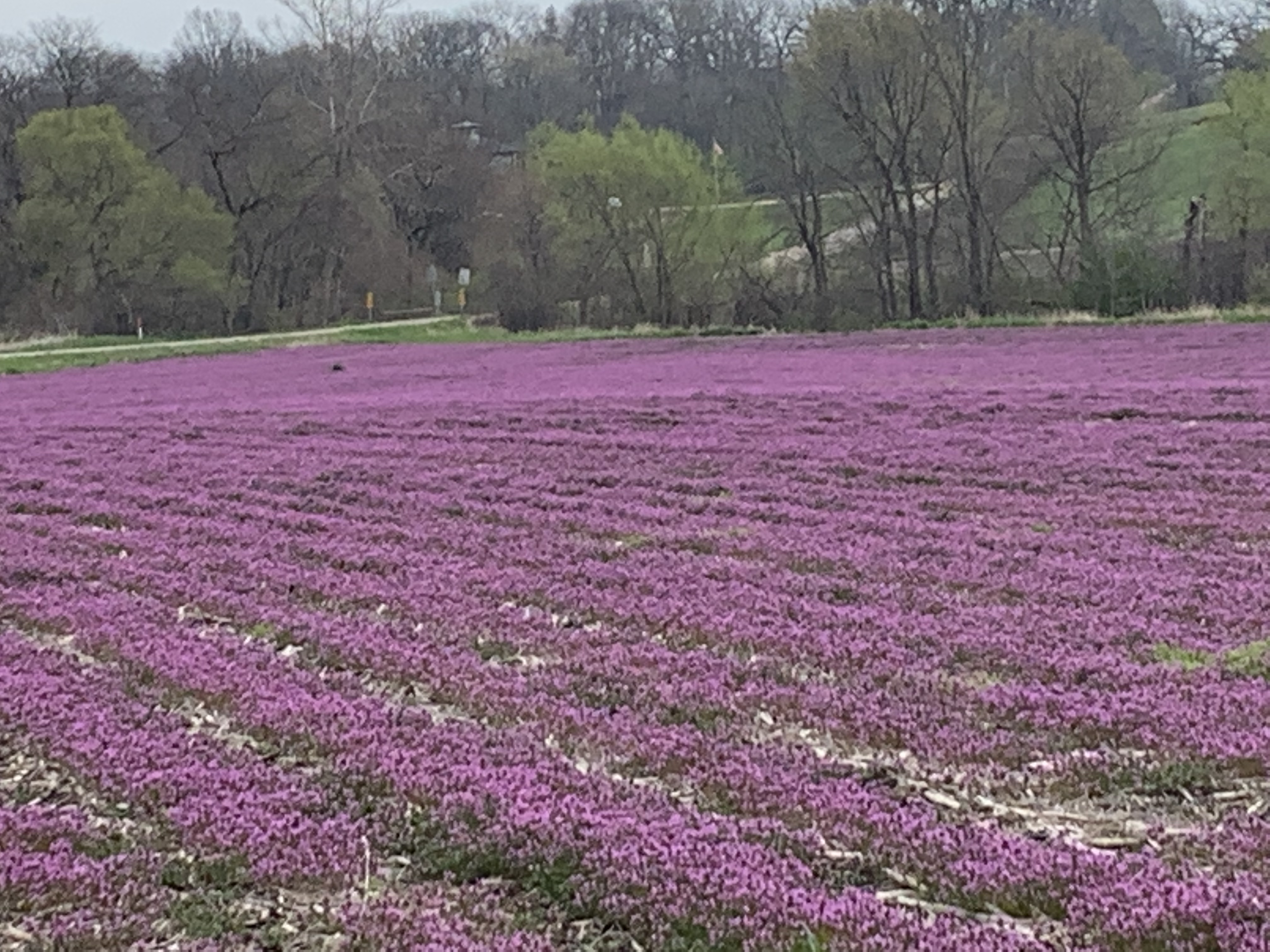Last spring around Easter time, we were on the way to church when, just down the road from Owl Acres, Bryan stopped the car. A whole bean field was blooming in purple flowers. It was beautiful. But what were they? Certainly not beans. He collected some plants so we could ID them later that day.
As it turned out, our preliminary inspection identified them as either dead-nettle or henbit, two related and often confused plants in the mint family. Closer inspection and comparison identified the plants in the field as henbit. But now looking at our yard, we’re seeing both plants in abundance among the early grass.
Whether you consider them noxious weeds, salad herbs, or pretty flowers depends entirely on your point of view. We opted for pretty flowers—but then we weren’t farming that beanfield or trying to make a flawless turf out of the yard. The differences are subtle between the two plants in bloom.
Henbit (Lamium amplexicaule) gets its name from the fact that chickens like to eat it. It also goes by names like giraffe’s head or hen and bitty. The stems, leaves and flowers of young plants are tasty edibles for people and chickens either raw or cooked. They are described as a light, succulent, mild greens taste with a hint of spice.

Close up of henbit flowers amid its foliage. Author photo
Henbit is low-growing, with multiple square stems rising from a single taproot. Its flowers are pink to pinkish-purple with darker spots on the lower lip. The flowers are tubular, and provide early-season nectar for bees.
Dead-nettle (Lamium purpureum) gets the nettle part of its name from the fact that it has hairs that look like the stinging hairs on stinging nettle. The dead part of its name refers to the fact that those hairs don’t sting so are “dead,” which is how I think all stinging nettles ought to be! Actually, the dead-nettle isn’t related to stinging nettle at all. Deadnettle, too, can be eaten, and has a stronger, peppery taste than henbit. A caution, though. Before the deadnettle flowers, it can be confused with foxglove, which is poisonous. So if you’re an adventurous eater of wild things, make sure you have the right plant before you make a salad out of it. After the dead-nettle flowers it is quite recognizable. It’s also called purple archangel in some regions.
Purple dead-nettle grows more upright than henbit, and has hairy leaves, buds and flowers. The flowers are lavender to pink in color and rise above the top leaves of the plant, which have turned purple.
Both deadnettle and henbit are natives to Asia and Europe, but they’re now widespread in North America. They’re winter annuals, germinating from seed in the fall, then overwintering in that state until early spring when they are ready to burst into bloom. After gracing the late winter landscape for a few weeks, they set seed and disappear by May.
We were content to let them grow in the yard until it was time to mow; our neighbor with the beanfield had other priorities. He obliterated them with herbicide and planted corn. We’ll watch for them in the yard this spring and maybe we’ll try some in a salad.
Photo by Author
